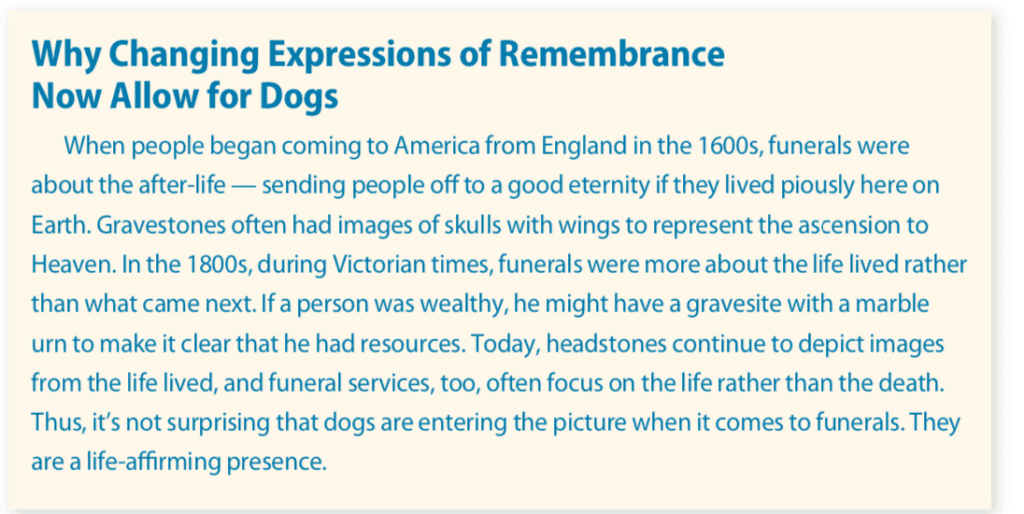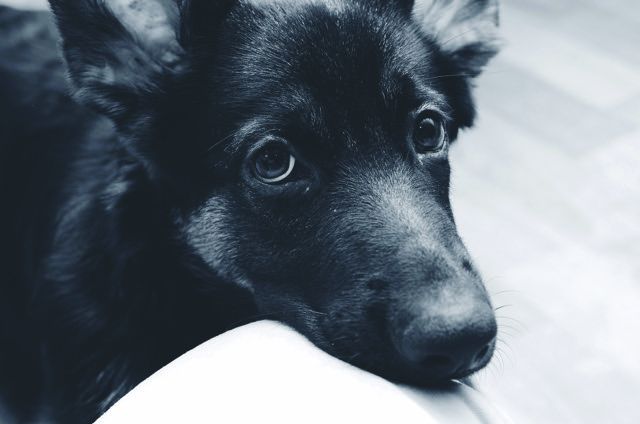While some people may consider a funeral service or a viewing to be an inappropriate venue for a dog, more and more funeral homes have a therapy dog on the “staff.” And more people saying a final good-bye to loved ones are opting to have the therapy dog present for the occasion. The presence of a calm, reassuring dog may be particularly helpful for a young child who does not have the words to express his feelings. Dogs do not need words. They can respond to sadness and provide comfort without a conversation.
At the same time, having a therapy dog on hand might help open up conversation for those who need to express their grief in words but don’t know where to begin. Think of it as the campfire effect. When people are sitting around a campfire together, it can make them more inclined to discuss something they might not have felt comfortable bringing up if there were no flames to distract some of the attention from them while they talked. It allows them to ease into a difficult conversation. Having a dog on hand might also allow people to open up because some of the attention is being paid to the animal.
who need to express their grief in words but don’t know where to begin. Think of it as the campfire effect. When people are sitting around a campfire together, it can make them more inclined to discuss something they might not have felt comfortable bringing up if there were no flames to distract some of the attention from them while they talked. It allows them to ease into a difficult conversation. Having a dog on hand might also allow people to open up because some of the attention is being paid to the animal.
The National Funeral Directors Association does not keep count of how many funeral homes have therapy dogs, but there has definitely been an uptick — no doubt fueled at least in part by a survey from that organization to which more than half the respondents replied that they would be “somewhat,” “very,” or “extremely” interested in having a dog present at a funeral or memorial service.
The qualities required of a funeral home therapy dog
A therapy dog who belongs to a funeral home director or someone else working at a funeral home will ideally have gone through training that is certified by a well regarded organization such as Pet Partners (petpartners.org). But the dog should also have qualities specific to the situation. The American Kennel Club suggests that a therapy dog who works at a funeral home should be able to do the following:
- Assume a consoling posture, for example, place her head on someone’s lap or knee.
- Sit or lie in place for as long as needed, even if that time is somewhat extensive.
- Tolerate extended petting that might go longer than what is generally considered acceptable for a therapy dog.
- Allow someone to hold her or put her on their lap if she is small.
- Follow directions to work the room if that is what is called for.
For those who do not want a dog near them at a funeral
Whether a dog attends a funeral or memorial service or a viewing is up to the person or family paying for the service, of course. But not everyone wants to have a dog near them during a time of bereavement or while paying respects. Their feelings need to be considered along with the grieving family’s. To that end, the American Kennel Club advises, the funeral home can post a small sign with a photo of the dog near the entrance to the room that says something like, “At the family’s request, a therapy dog is present today. Please let [the funeral home] know if you are not comfortable with dogs.” This is particularly important, as some people are afraid of dogs or have allergies to them. The funeral home has to be able to keep a therapy dog away from such visitors while allowing access for those who would appreciate the canine comfort.





